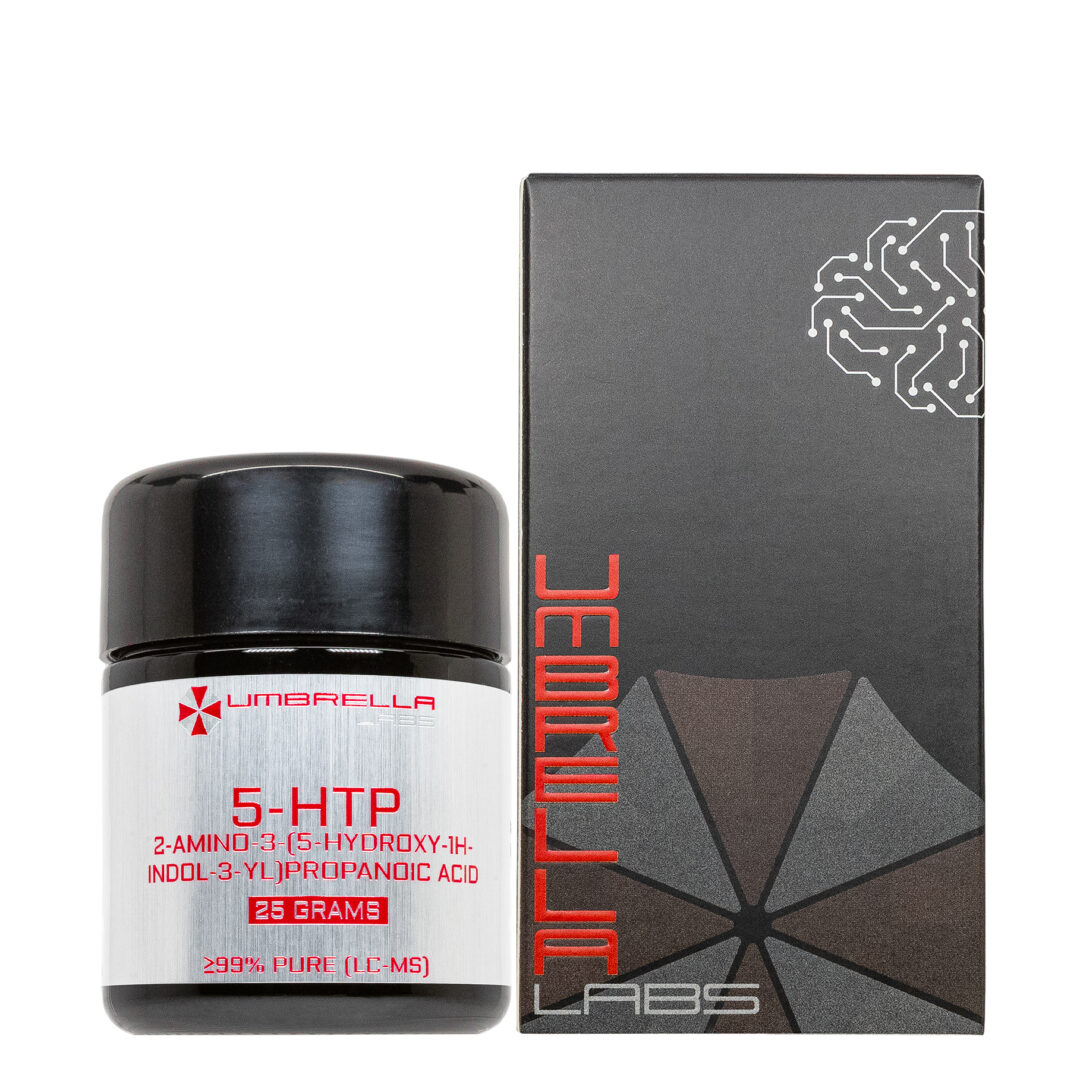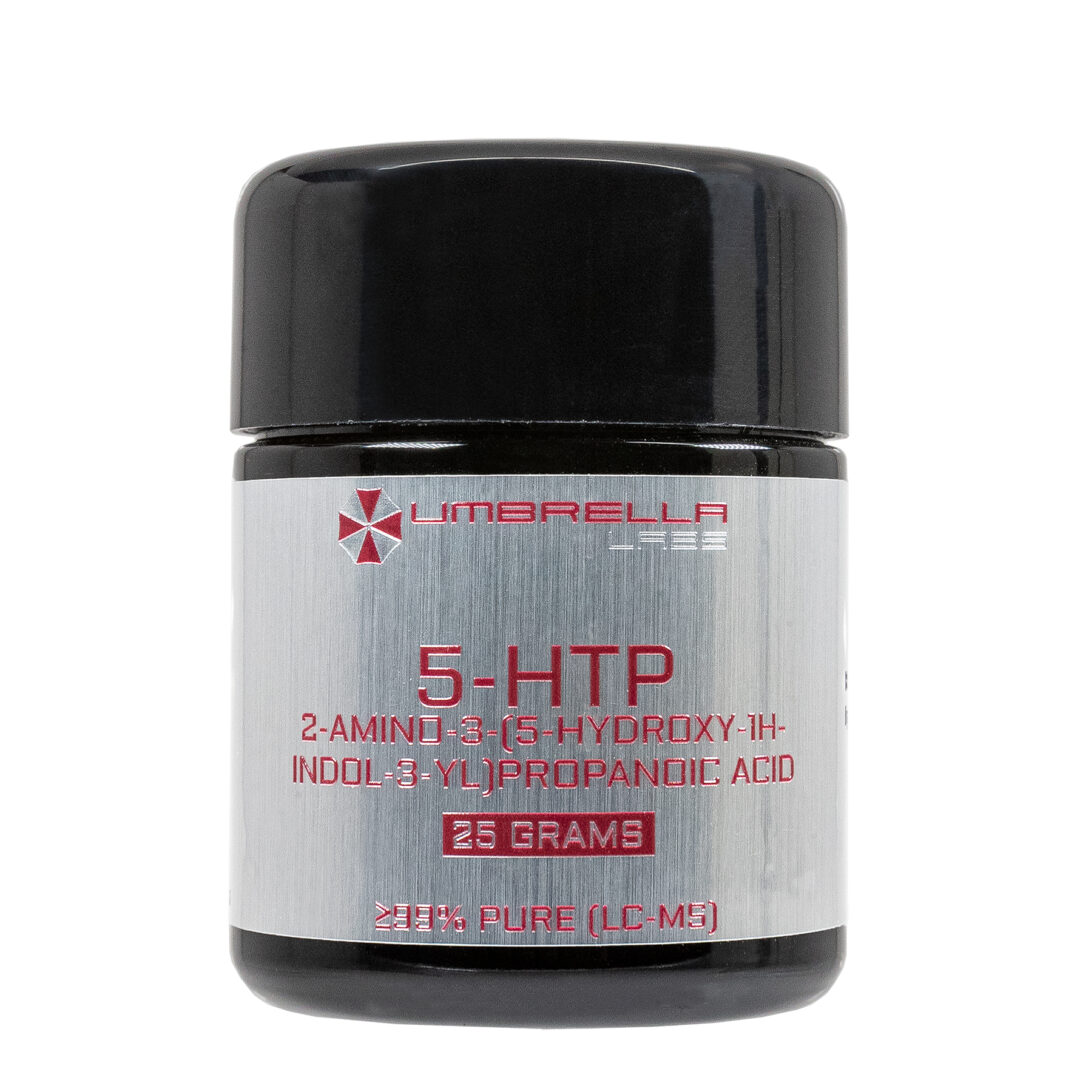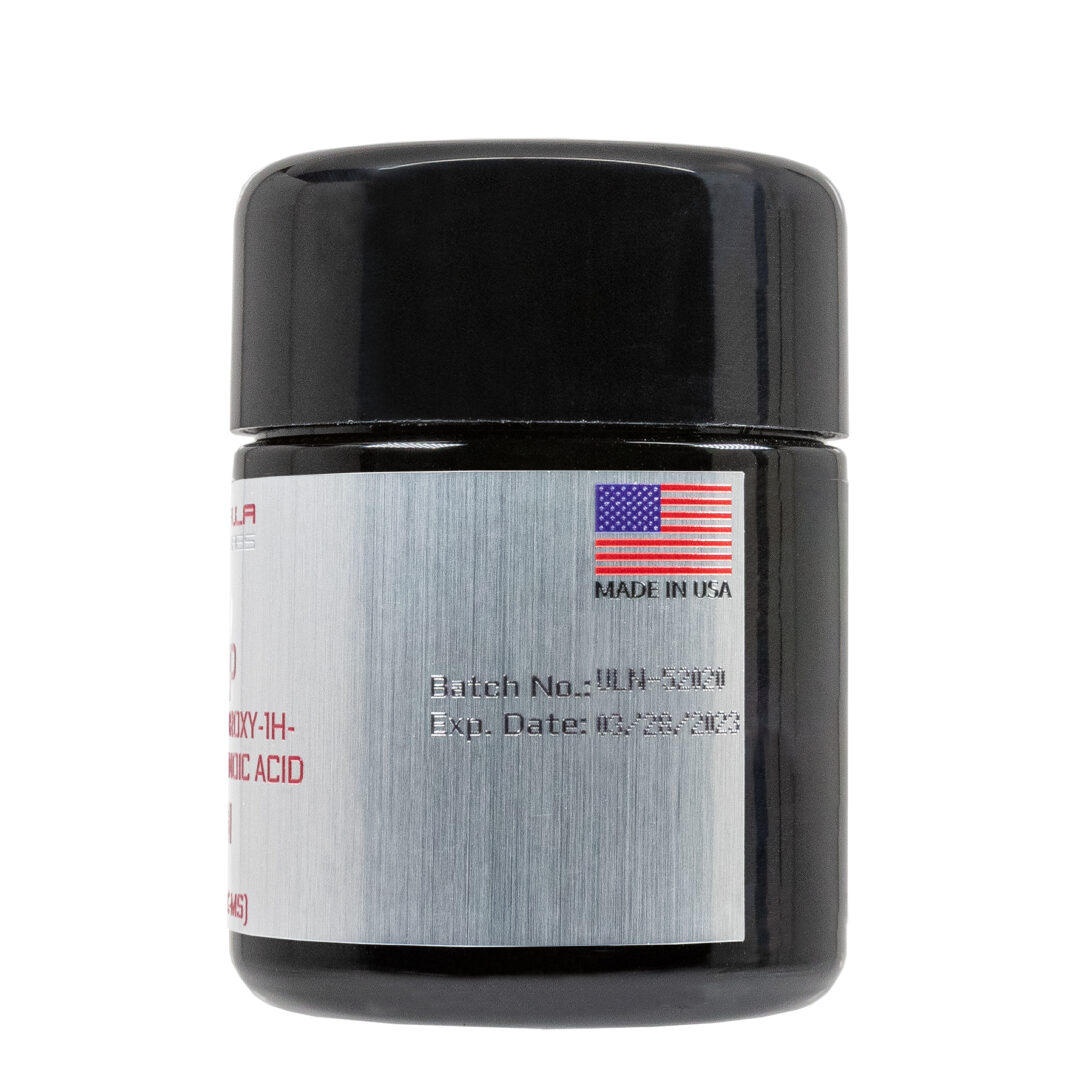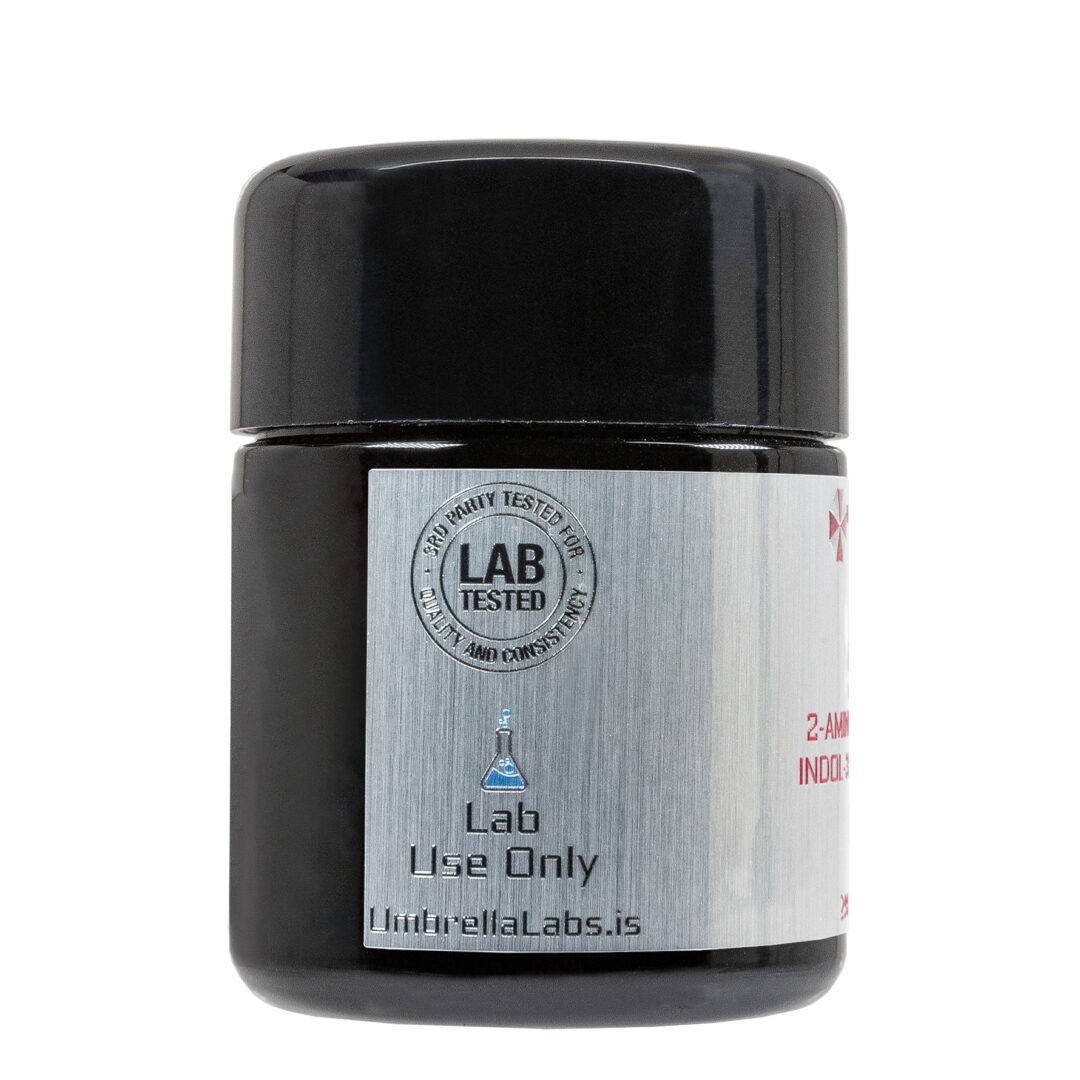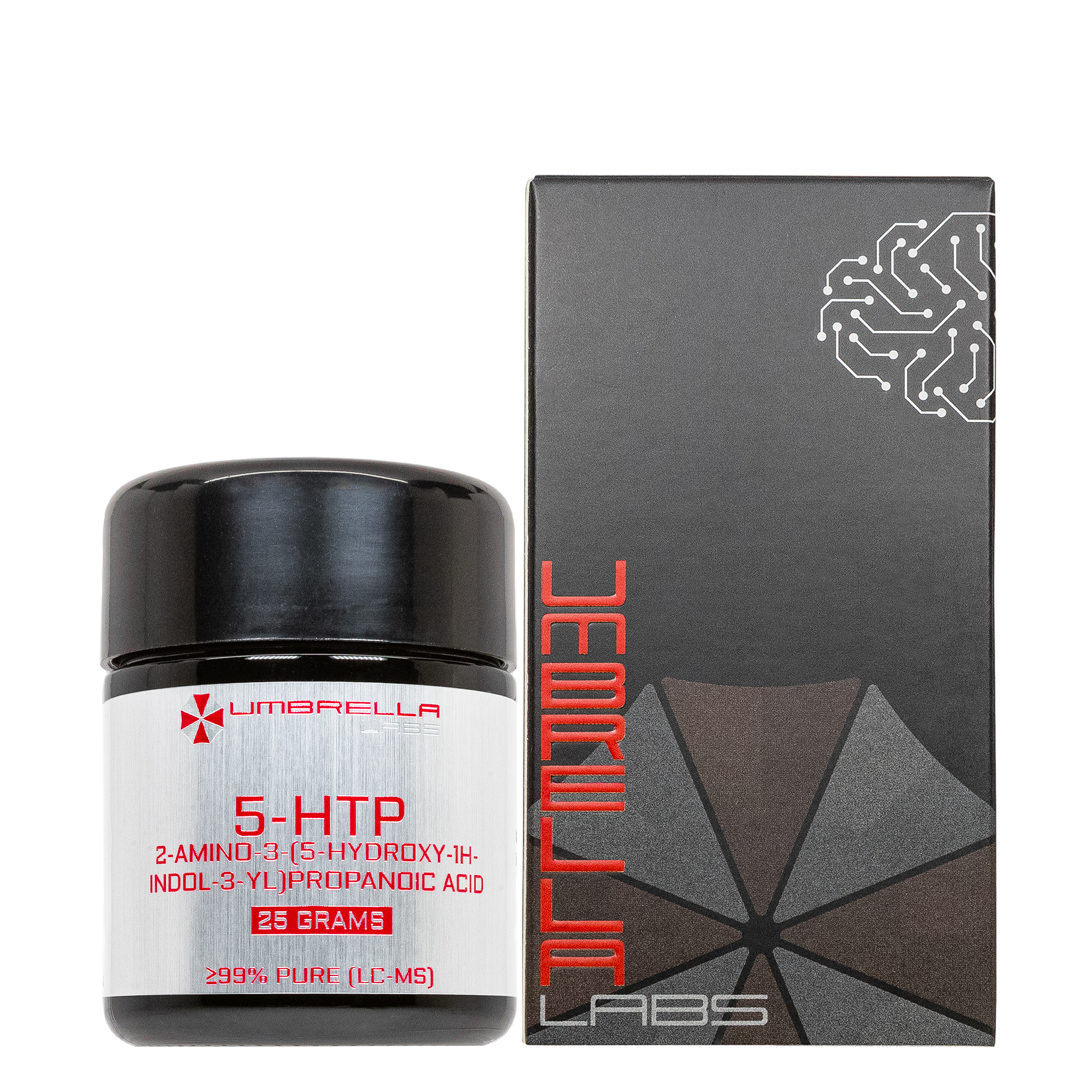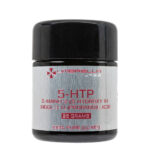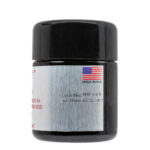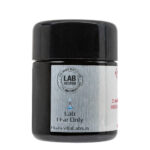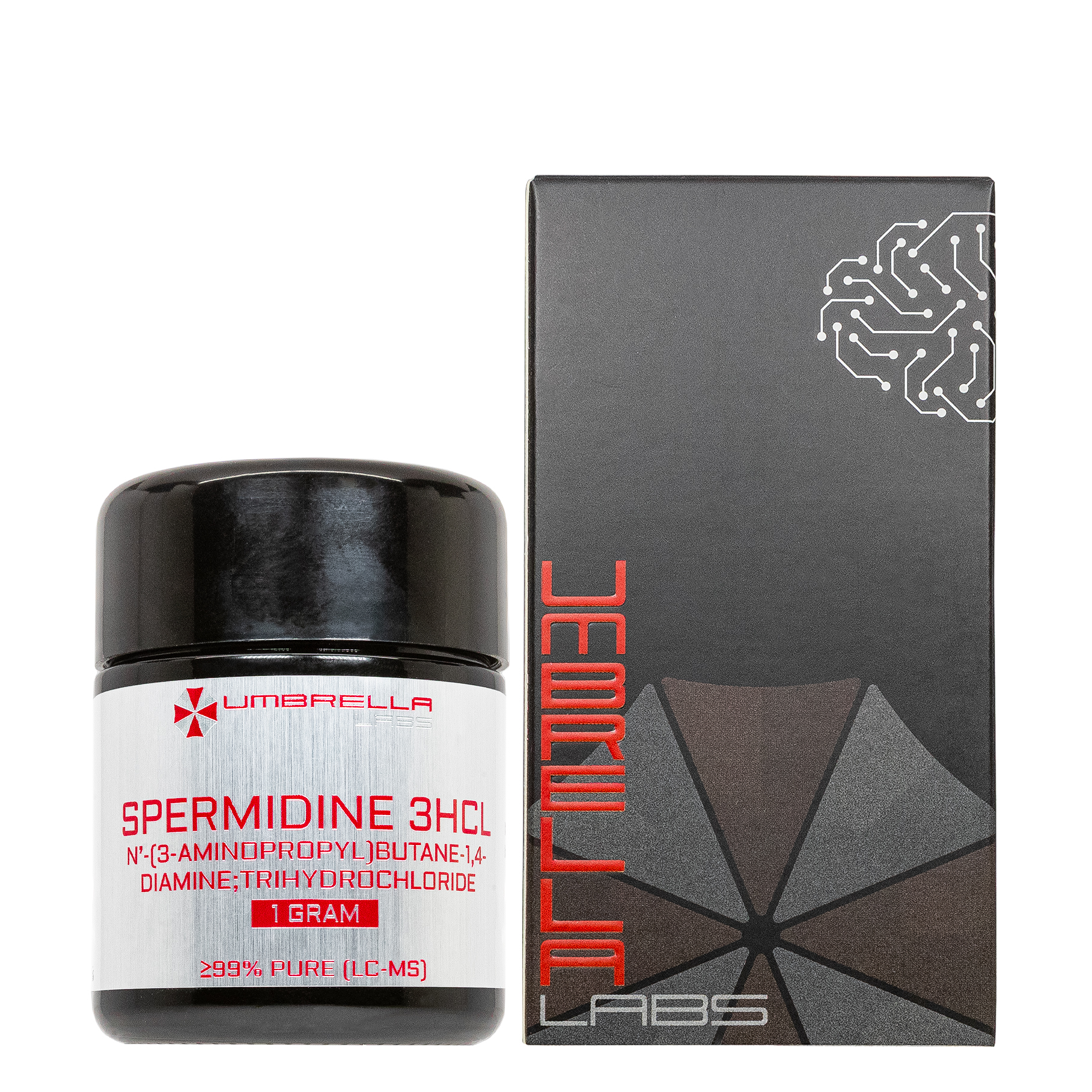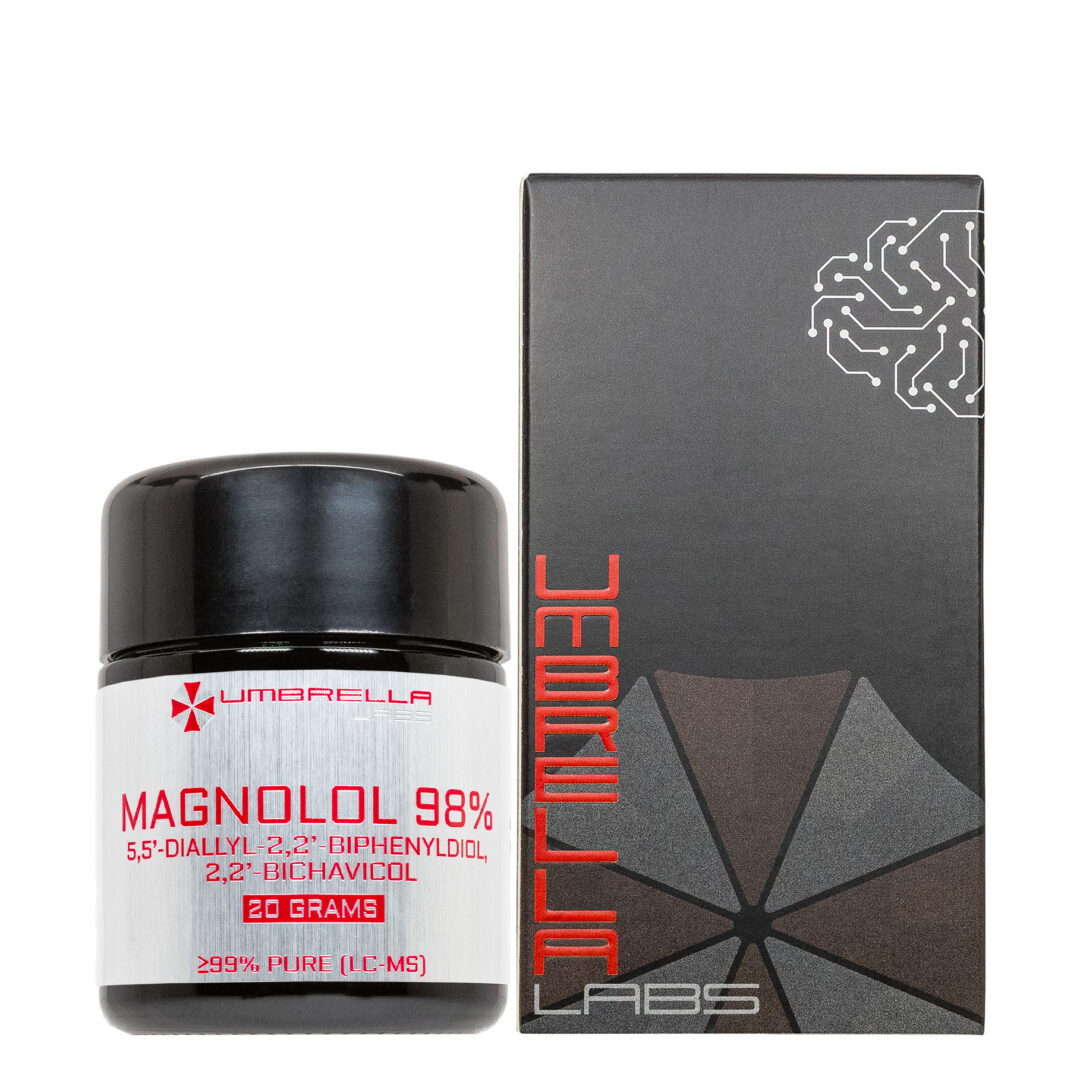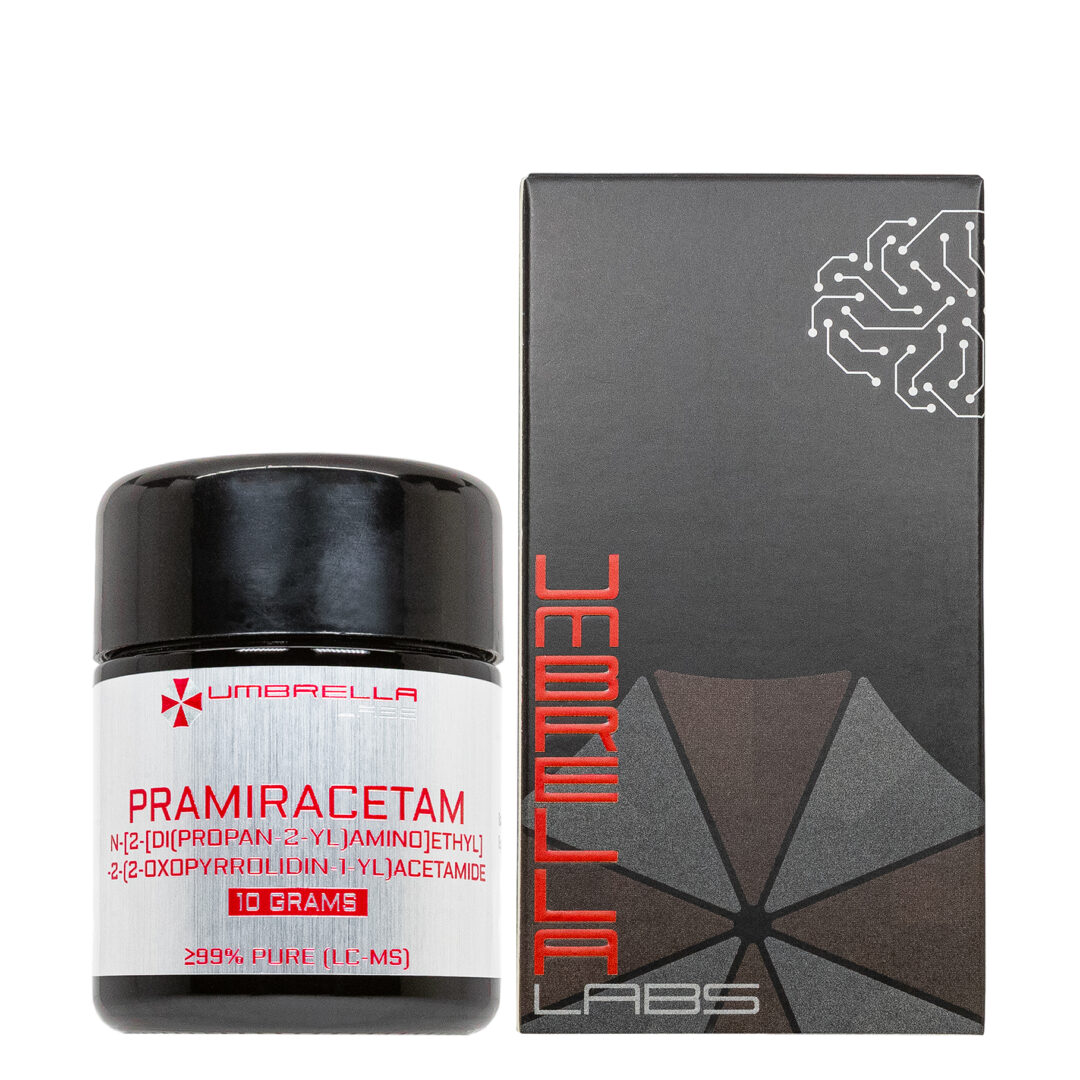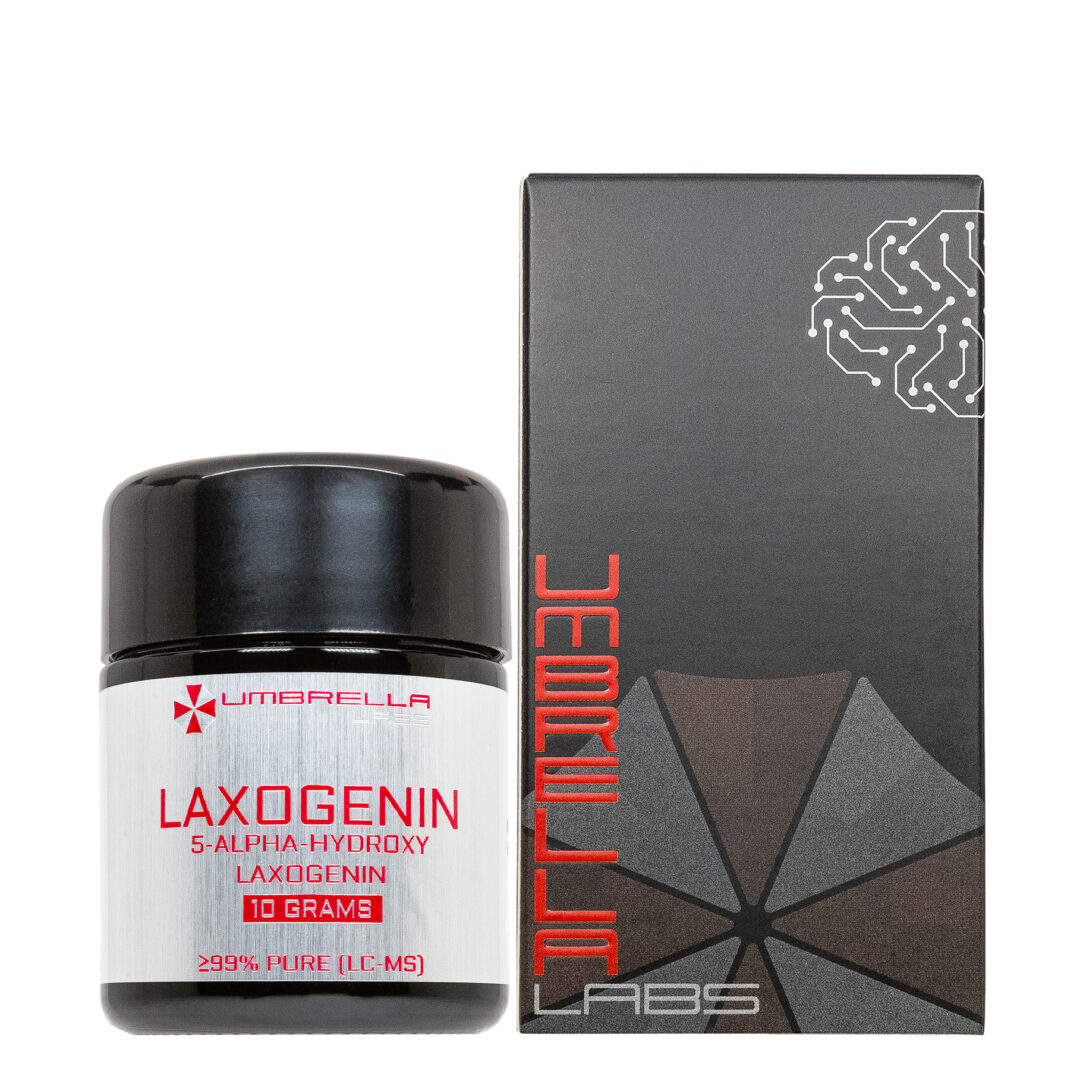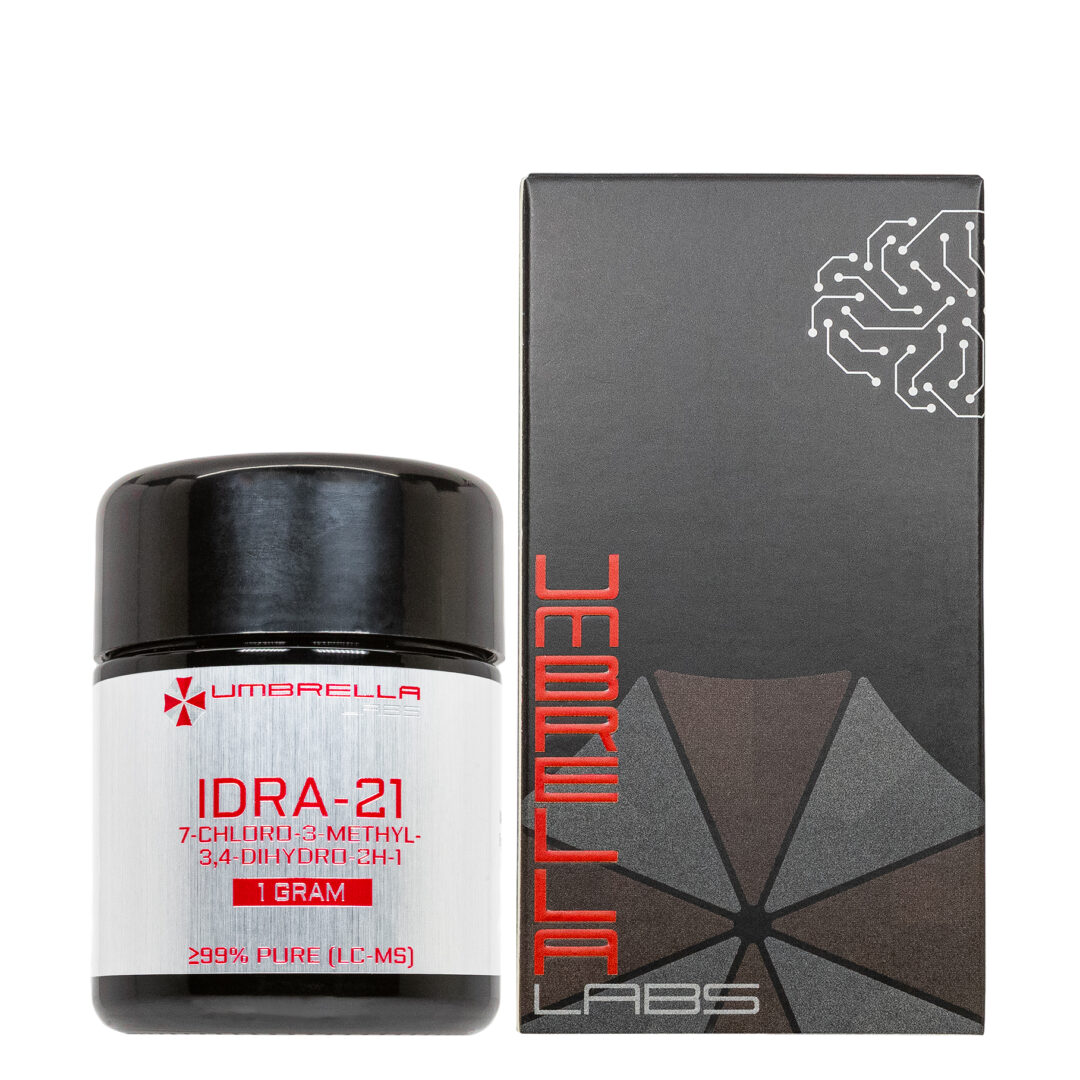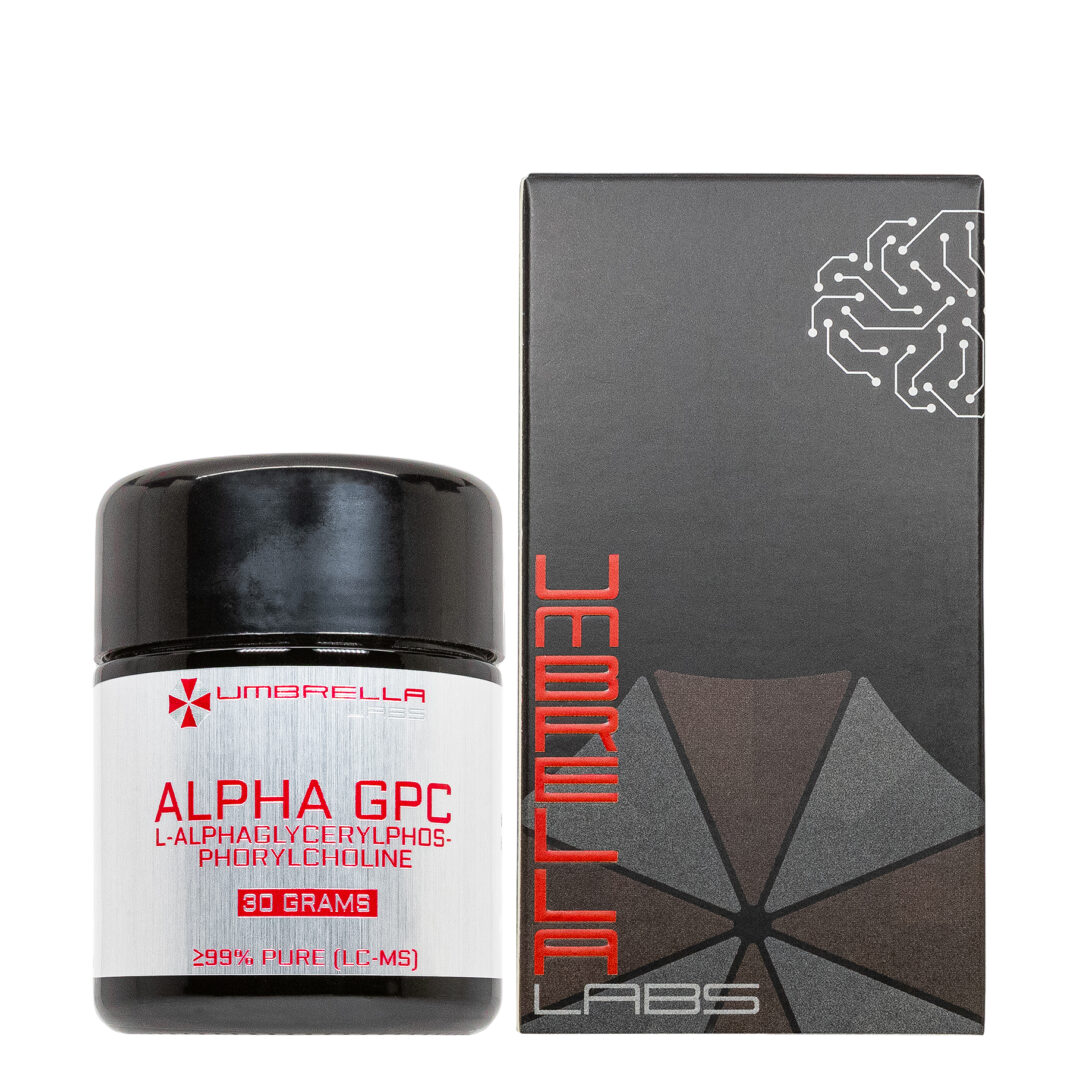5-HTP POWDER (25 GRAMS)
$20.99
5-HTP is sold for laboratory research use only. Terms of sale apply. Not for human consumption, nor medical, veterinary, or household uses. Please familiarize yourself with our Terms & Conditions prior to ordering.
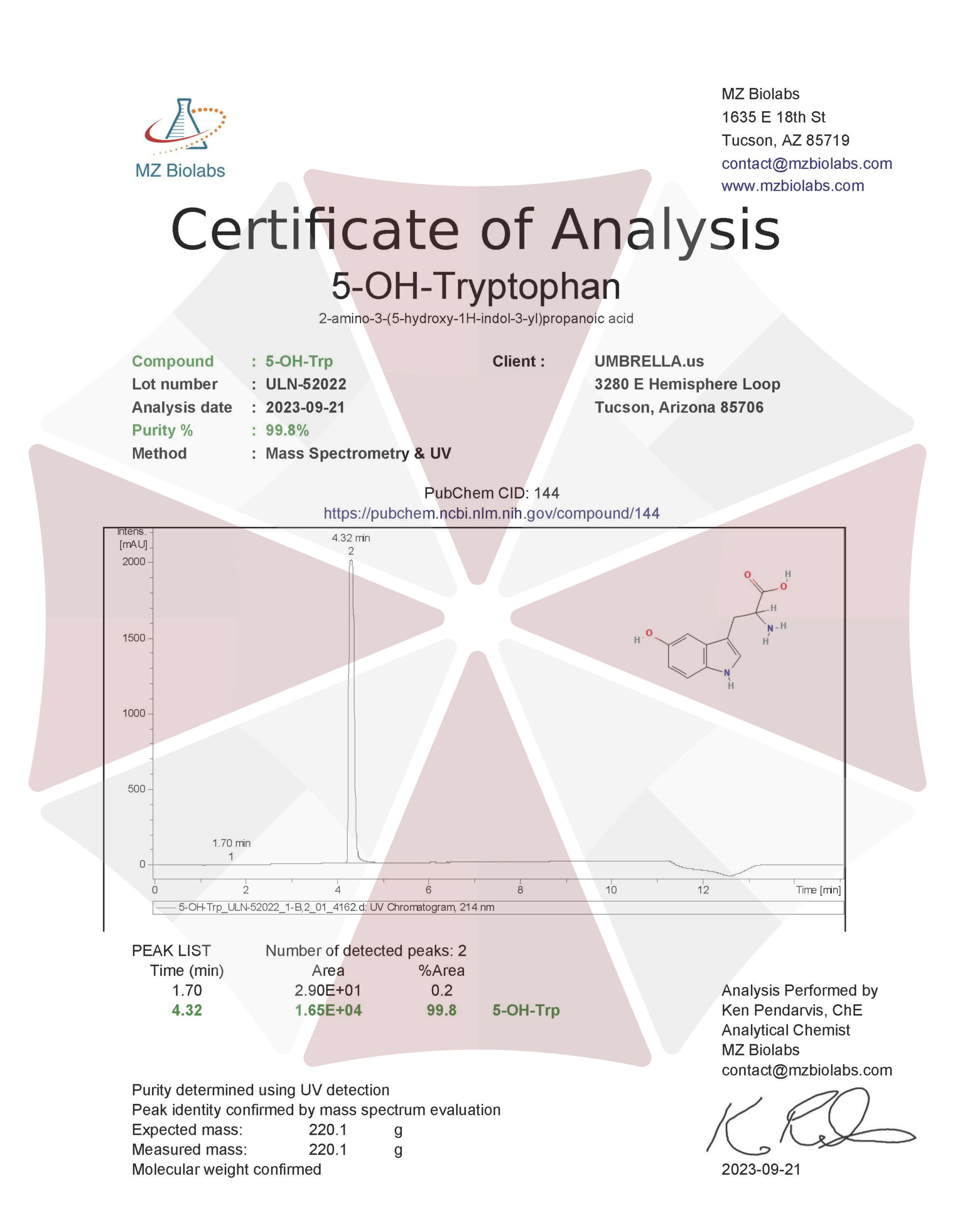
Also Available In:
- Description
- Additional information
Description
5-HTP Nootropic Powder
![]()
![]()
![]()
![]()
![]()
![]()
![]()
![]()

| CAS Number | 56-69-9 |
| Other Names | 5-hydroxytryptophan, 56-69-9, 5-Hydroxy-DL-tryptophan, DL-5-Hydroxytryptophan, 2-amino-3-(5-hydroxy-1H-indol-3-yl)propanoic acid, DL-Hydroxytryptophan, DL-5-HTP |
| IUPAC Name | 2-amino-3-(5-hydroxy-1H-indol-3-yl)propanoic acid |
| Molecular Formula | C₁₁H₁₂N₂O₃ |
| Molecular Weight | 220.22 |
| Purity | ≥99% Pure (LC-MS) |
| Liquid Availability | |
| Powder Availability | |
| Gel Availability | N/A |
| Storage | Store in cool dry environment, away from direct sunlight. |
| Terms | All products are for laboratory developmental research USE ONLY. Products are not for human consumption. |
Effects of 5-HTP
5-Hydroxytryptophan (5-HTP) is a chemical derived from the essential amino acid, tryptophan. Tryptophan is converted into 5-HTP which is then changed into serotonin. Various animal-based studies have examined the efficacy of taking 5-HTP to improve levels of serotonin. Since serotonin assists in regulating mood and behavior, supplementation of 5-HTP can lead to decreases in depression and anxiety. Further studies have found that the compound is also capable of improving pain and obesity.
Due to its ability to increase serotonin levels in the brain, 5-HTP is being examined as a treatment for depression as it functions similarly to selective serotonin reuptake inhibitors (SSRIs) such as fluoxetine and sertraline. A notable study conducted in animals compared the effects of 5-HTP to the SSRI fluvoxamine. There were 63 subjects included in this experiment that were administered either 5-HTP of fluvoxamine. Results found that the compounds elicited similar results, however, 5-HTP treated anxiety and depression in the animals with fewer side effects than the SSRI. This study highlights the potential of 5-HTP to act as an antidepressant agent, but more extensive research has to be conducted with larger experimental groups.
5-HTP has also shown promise in managing pain, animal-based studies have noticed this effect primarily in cases of fibromyalgia and chronic migraines. Many of the side effects that come from these conditions are related to low levels of serotonin in the brain and antidepressants are frequently administered in order to treat varying degrees of anxiety, pain, and fatigue. In cases of both fibromyalgia and chronic migraines, evidence shows that administration of 5-HTP can have positive effects, however, research is limited on this subject and mixed results are common. Further research has to be conducted before coming to a solid conclusion regarding the compound’s efficacy in treating pain.
In addition to its pain management benefits, studies have found that 5-HTP may be capable of treating obesity. Various studies have found evidence that when animals are administered 5-HTP they end up eating less calories than the ones that do not receive treatment. Researchers theorized that this occurs because 5-HTP allowed the animals to feel more satiated, meaning that they end up eating less at meal time. The follow up studies conducted examined the weight loss effects of 5-HTP on animals when dieting versus not dieting and compared these results to those of the control group. During the non-dieting portion of the study the researchers found that the animals lost 2% of their body fat and an additional 3% during the dieting portion. These results were not seen in the group receiving the placebo; no significant amount of body fat was lost (https://www.mountsinai.org/health-library/supplement/5-hydroxytryptophan-5-htp).
5-HTP Influence on Serotonergic Neurochemistry
As it was previously mentioned, 5-HTP is a direct precursor to serotonin. However, studies have revealed that not all interventions to serotonergic dysfunction are as effective as they could be. Researchers Weinburg-Wolf et. Al conducted an experiment regarding how administration of 5-HTP could potentially affect serotonin functioning in macaques and how their attention varies depending on social or non-social tasks. The study included 6 adult rhesus monkeys that were shown stimulus images in a room alone; the pictures they were shown included other monkeys they have never interacted with exhibiting various social cues on screen. Prior to the screen tests the monkeys were intramuscularly administered a dose of either 20 mg/kg or 40 mg/kg of 5-HTP. In order to gather accurate data, the researchers were constantly changing the order and dosage being given to the monkeys in order to assure that any changes in serotonergic neurochemistry were caused by 5-HTP.
In order to measure the results, the researchers took a sample of the monkeys’ CSF following administration of 20 mg/kg, 40 mg/kg, and the placebo as well as tracked their eye movement patterns and looking duration during the stimulation period. Results initially found that in higher attention baseline animals engagement decreased following the administration of 5-HTP, while lower attention baseline animals engagement increased. It was also discovered that if the monkeys looked towards the social stimuli more frequently in the baseline tests, they were drawn to non-social stimuli following 5-HTP administration and vice versa. This allowed the researchers to conclude that the baseline differences determine how attention is regulated by 5-HTP.
The information regarding looking duration is directly correlated to serotonin levels as there was a positive relationship between serotonin levels found in the CSF and how long the monkey looked at the stimuli. Overall, the researchers were able to conclude that injections of 5-HTP allow for more efficient regulation of attention through improved serotonergic neurochemistry. However, further research should be conducted regarding the discrepancies observed regarding the determination of whether the animal has a high or low attention baseline (https://www.nature.com/articles/s41386-017-0003-7).
The nootropics sold by Umbrella Labs are sold for laboratory research only. The description above is not medical advice and is for informative purposes only.
5-HTP is sold for laboratory research use only. Terms of sale apply. Not for human consumption, nor medical, veterinary, or household uses. Please familiarize yourself with our Terms & Conditions prior to ordering.

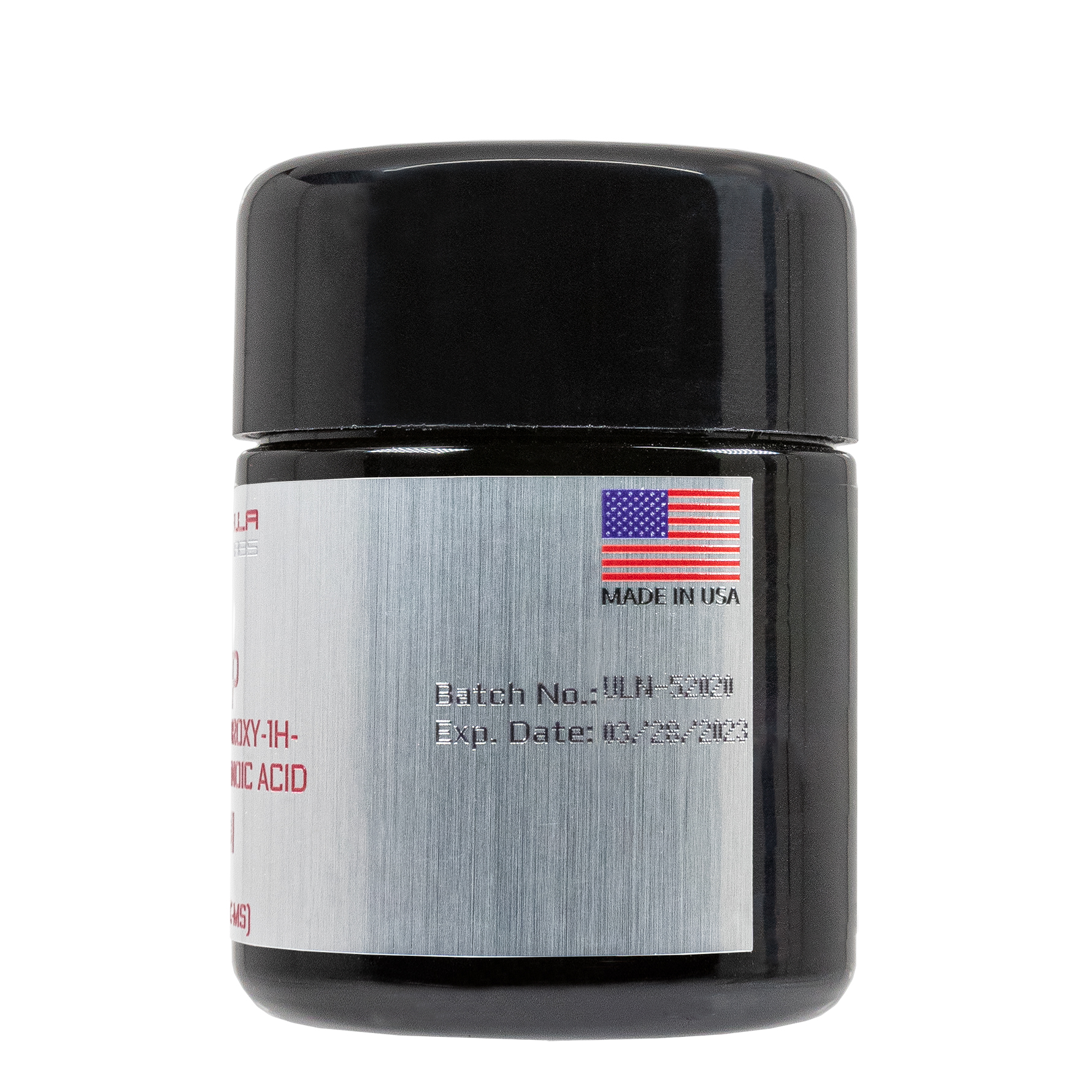
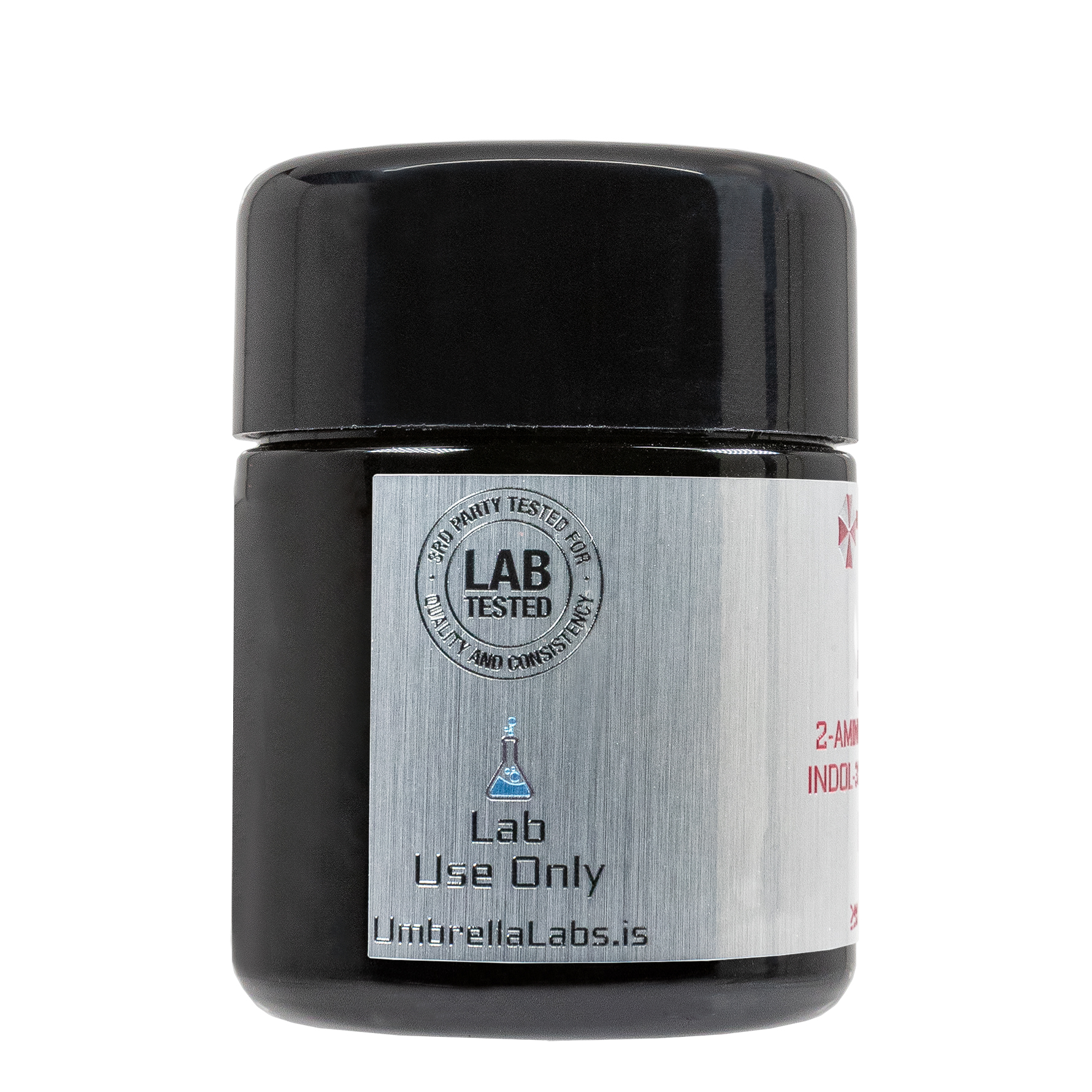

| File Name | View/Download |
| 09-21-2023-Umbrella-Labs-5-HTP-Certificate-Of-Analysis-COA.pdf |
VIEW CERTIFICATES OF ANALYSIS (COA)
Additional information
| Options |
|---|

